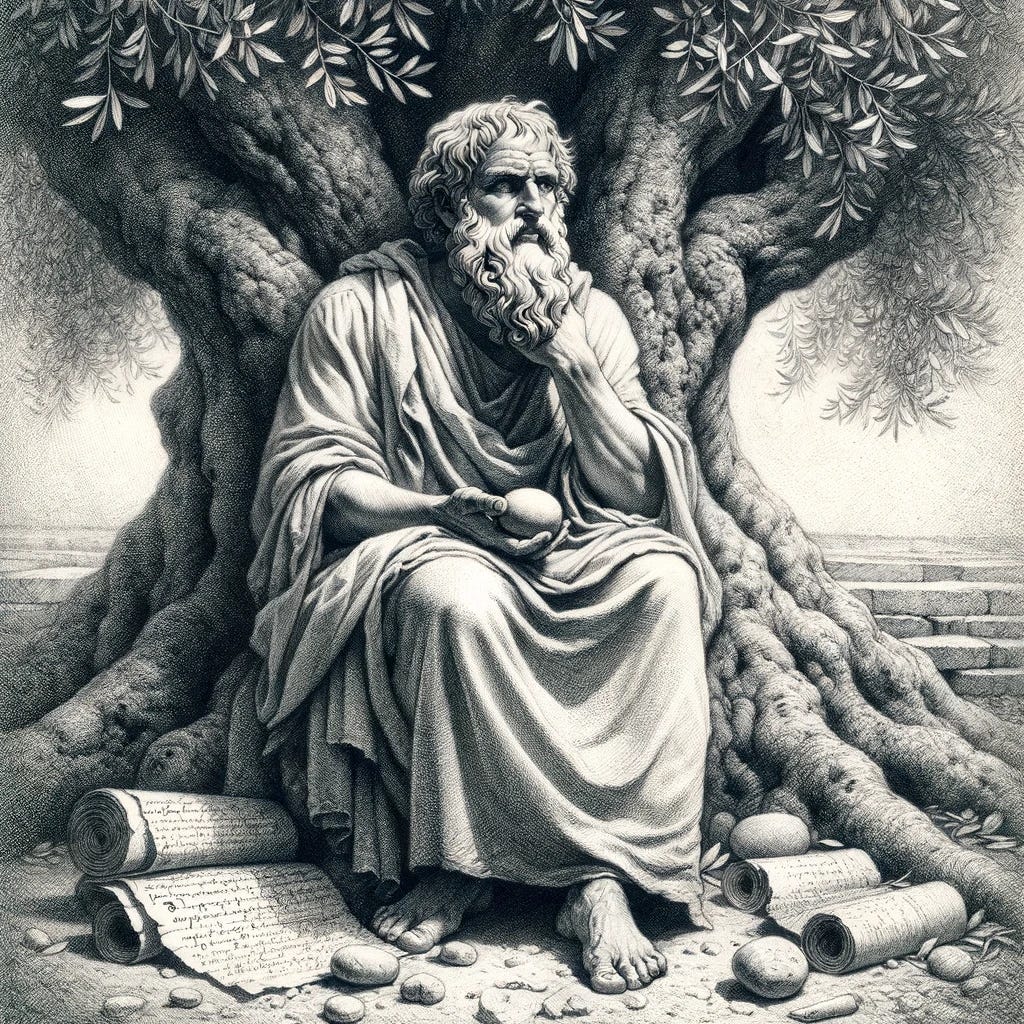Atomos
A tantalizing thought occurred to Democritus: What would happen if you kept cutting a substance in half?
Take that half, then cut that in half, too. Keep going, all the way down.
Democritus gave it some thought. There must be a smallest thing down there, some kind of particle so tiny as to be indivisible, or atomos, as the ancient Greeks called it.
This thing would be the building block of everything we see.
Around 2400 years ago, this Greek philosopher proposed a primordial version of atomic theory, the scientific understanding that the world around us is made of tiny, fundamental particles called atoms. The way these atoms interacted, Democritus said, determined how everything looked, smelled, felt, or tasted.
Then, for 2200 years, atomic theory languished unseen. Nobody much took it seriously or even remembered it.
While Democritus’s way of coming up with atomic theory was purely theoretical, Dalton’s was based entirely on experiment and observation. By the turn of the 19th century, …
Keep reading with a 7-day free trial
Subscribe to Goatfury Writes to keep reading this post and get 7 days of free access to the full post archives.


